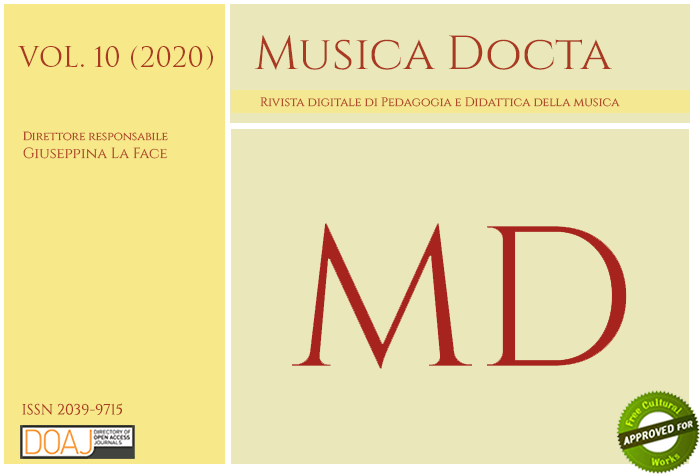Un percorso didattico sul “Rigoletto” di Verdi: «La donna è mobile» e la voce come fantasma
DOI:
https://doi.org/10.6092/issn.2039-9715/11939Keywords:
Listening didactics, Didactics of melodrama, Verdi, Rigoletto, singingAbstract
This didactic unit, designed for the first two years of secondary school, briefly contextualizes the figure of Giuseppe Verdi within the history of 19th-century Italian melodrama. It then moves on to illustrate the dramaturgy of Rigoletto, which clearly reflects in the social and aesthetic reality of its time, explaining why Verdi was so fond of this subject, and defended it strenuously - and in the end successfully - from the axe of censorship. The course focuses on listening didactics applied to «La donna è mobile», with the aim of helping learners understand the structure and meaning of the libretto, the music and its peculiar use in the drama. «La donna è mobile», a tavern song and, at the same time, the song most deeply rooted in drama that has ever been conceived, is heard three times in the course of the opera, each time in a slightly different musical version, and always for dramatic purposes. The third occurrence ushers in one of the most effective, and upsetting, catastrophes in the tragic theater of all time: a catastrophe entirely rooted in sound and singing - that is, in the sense of hearing which prevails over the sense of sight. The lesson we learn from «La Donna è mobile» is that in opera it is the musical text that has "the last word" rather than the verbal and visual text.
Downloads
Published
How to Cite
Issue
Section
License
Copyright (c) 2020 Saverio Lamacchia

This work is licensed under a Creative Commons Attribution-ShareAlike 3.0 Unported License.




